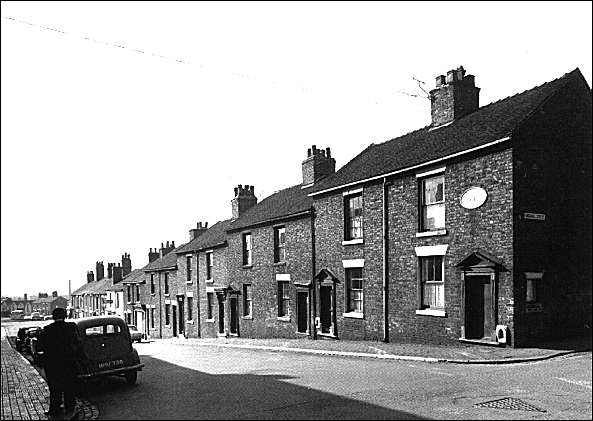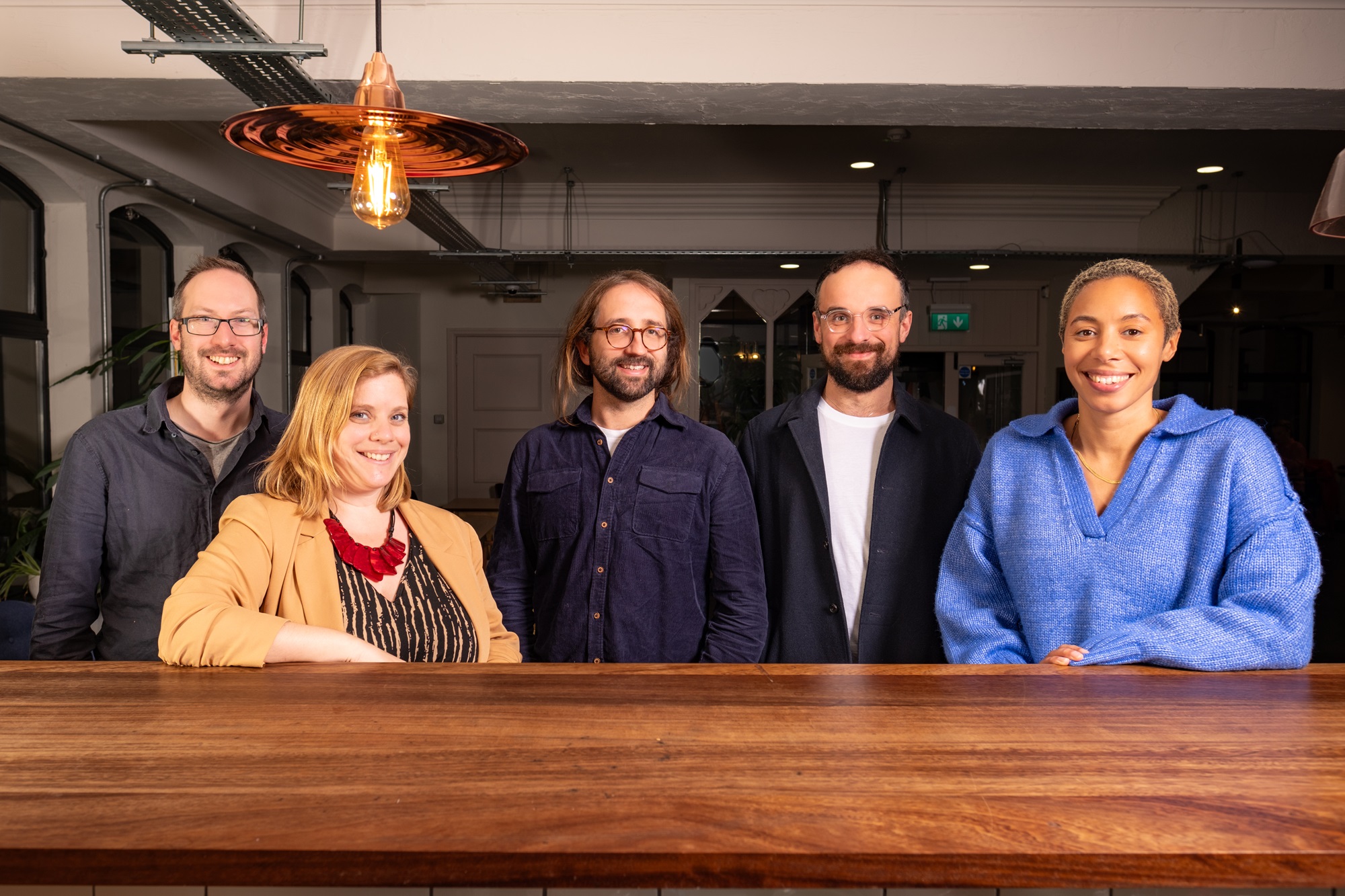Life on Bentilee where strength of community outweighs stigma and austerity
Sarah is from Stoke-on-Trent and directs the city’s largest free event - the Six Towns Carnival. Here, she speaks with residents of Bentilee - one of the largest housing estates in Europe - and examines prejudice, stigma, austerity but, most pertinently, the strength of community
“I still know a lot who live on Bentilee. They are the realest of people and they all know everyone and treat everyone like family,” Janine Hankey, whose family grew up on the estate and who has her roots there, told The Stoke-on-Trent Lead.
At the heart of the city of Stoke-on-Trent lies a housing estate called Bentilee. This colossal estate stretches throughout three of the main towns that make up the Six Towns of Stoke-on-Trent and was at one time Europe’s largest housing estate - not Britain’s but Europe’s.
It’s not just its mammoth proportions that make Bentilee an interesting subject. The evolution of its social landscape is both a contradiction and puzzlement that sets it apart from its surrounding towns and villages of Stoke-on-Trent and almost makes it a self-contained town in its own right.
Over the years local press and hearsay have dubbed Bentilee a “rough area” – Stokies do seem to have a natural inclination to assign local areas a value of sorts, placing them on an imaginary scale that has little to do with property value and more an archaic snobbery of yesteryear – sadly Bentilee has fallen victim to this strange elitism and it has stuck, despite the changes over the past 20 plus years.
Built in the 1950s, the architecture of the some 4,500 houses is quintessentially post-war in appearance with their red brick main buildings and outhouses. Though many residents have renovated their properties, there still remain many original features and save for the modern cars, looking at the estate can transport you back to the 1950s/60s. Especially as some older residents still favour net curtains and hanging baskets over more modern embellishments. It gives a charming sense of nostalgia to stroll through on a quieter morning.
There are some contradictions in discussions about the original purpose of building such a large estate at the centre of an industrial city like Stoke-on-Trent.
One take is that it was to support the emerging commercial town centre of nearby Hanley, others surmise that it was an attempt to provide affordable housing for the potbank workers of the surrounding areas of Longton, Hanley and Fenton in order to bring the pottery industry back to its former pre-WWII glory.
The mystery of the purpose of the construction of Bentilee, and the clannish nature from small numbers on the estate over seven decades, are just a couple of the factors that have led to a certain preconception and reputation of the estate and people who “come from” it.
Joanna Wright grew up on Bentilee and reflects on how some areas of Bentilee were viewed differently to others.
She told The Stoke-on-Trent Lead: “Berryhill was viewed as the posh end of the Bentilee estate but we still got into scrapes as kids. We liked to play on the brook that ran along the old railway lines where the coal came along from Florence pit. The miners used to throw a piece of coal into my nan’s garden for good luck as I waved to them from the kitchen window standing on a chair.
“When the miners from the North East moved down to work the pits I made friends with the daughter of one family and she would dare me to go play on the walkways over Dividy Road on the “big bad side of the estate”. I loved the shop vans as well, playing on the garage roofs and nipping to the chip van.”

Life on Bentilee
Once you look beyond the veil of rumours, supposition and - to be frank - outright prejudice, what becomes apparent is that the people of Bentilee, though they have similar backgrounds, are extremely diverse, resilient, creative and have very engaging stories about their histories.
Speaking with local residents, business owners and community leaders, it became clear that Bentilee has suffered greatly from the austerity measures of the previous Conservative City Council administration.
The local centres, put in place by a Labour-led council in the late 90s and early 00s, served as a hub of activity and resources for the residents of Bentilee. The overwhelming consensus is that the quality of life for residents was much better during these times. Antisocial behaviour decreased markedly and there was a real sense of pride in the community in a way that hadn’t been there before.
Press coverage became more positive and the access to resources for families, children and vulnerable residents – literally having a “catch-all” centre more or less on your doorstep – greatly benefitted residents all around. Once these resources were cut or sold off to the private sector, the impact was devastating and the past almost decade-and-a-half has seen a return of some of the more negative aspects of ‘estate life’.
Natalie, from local community group ST2Gether, told The Stoke-on-Trent Lead: “I've lived in Bentilee for near on 20 years. The only family I have here are those in my household. I've made some longtime friends who live on the estate. I have seen things change over the years; we have had a new centre which besides the medical placements is inaccessible for the local community.”
The building is a PFI. A Private Finance Initiative (PFI) is a long-term contract between a private party and a government entity where the private sector designs, builds, finances and operates a public asset and related services. In a PFI contract the private party bears the risks associated with construction and maintenance and management responsibility, and remuneration is linked to performance.
“They (city council) would sooner have an empty community centre with an unused bar and kitchen rather than allow local community organisations like ours to run it as a committee and generate income. We can use it but with so many restrictions - family activities are not viable.
“We have a 0.1 % police coverage, the City Council - last administration ran the Children Centre (SureStart) down with all the cuts - but that is picking up again under the new administration. The community is relatively friendly and welcoming. It's a decent place to live despite the bad press.”

Max Maxwell of Ten Count Boxing Gym CIO
Laura Bailey, from 10 Count Boxing Gym located at the historic Winchester Halls building in Bentilee, told The Stoke-onTrent Lead about the evolution of the premises and the work they currently do there.
“Winchester Halls was originally a church built in 1962, funded by the congregation. Over the years as the congregation numbers dwindled it sadly became unused and derelict where it stood vacant for many years.
“It was then bought by the charity Al Maryam and around ten years ago two local former professional boxers Max Maxwell and Lee Jones started a gym there – 10 Count Boxing. Over the next few years they amalgamated their passion for fitness and community by offering boxing training and classes, facilities for food banks, support groups and youth initiatives.
“10 Count have now been awarded almost a million pounds in funding from the Youth Investment Fund to continue their excellent work and services to the community and undertake some renovations to modernise the building as to fit the ever-expanding base of community users.
“This includes free sessions for SEN children and a men’s mental health group called Own Tomorrow.
“This is run by Anthony Boland who himself lost nine stone in a year training with 10 Count. There is so much more such as ladies-only training and support groups, amateur boxing and charity matches. Groups such as this are invaluable to the local community.”
From speaking to the people of Bentilee, it puts a totally different perspective on the preconceptions people can hold of large housing estates.
There has been a real evolution from a post war almost parish like town led by local churches to a diverse, self-empowered hub of activities aspiring to a modern age of unity and collaborative innovation.
Austerity, however, will always most seriously and negatively impact those most in need of community and support.
So, when services and funds are cut where does it leave already deprived communities?
Local organisations such as ST2Gether and 10 Count Boxing have shown the most admirable grit and determination in advocating and empowering communities where there has been failure. It is people using their already held skill sets, people with a determination to better not just themselves but others and their local area - and it is a testament to how strong communities are built and evolve in the face of ever-changing political leadership and cuts.
Bentilee may very well always be spoken of in terms of being one of Europe’s largest housing estates, and as such face prejudicial stigma, but behind the doors of these red brick houses lies more.
Sign up to get the Stoke-on-Trent Lead here
Sarah is founder and co-director of Staffordshire Association For Black Lives Equality CIC (SABLE). Sarah works on many collaborative projects and initiatives, specialising in inter-hierarchical models of engagement to ensure equitable pathways and practices. Sarah is from Stoke-on-Trent and directs the city’s largest free event - the Six Towns Carnival.
The Lead is now on Substack.
Become a Member, and get our most groundbreaking content first. Become a Founder, and join the newsroom’s internal conversation - meet the writers, the editors and more.




